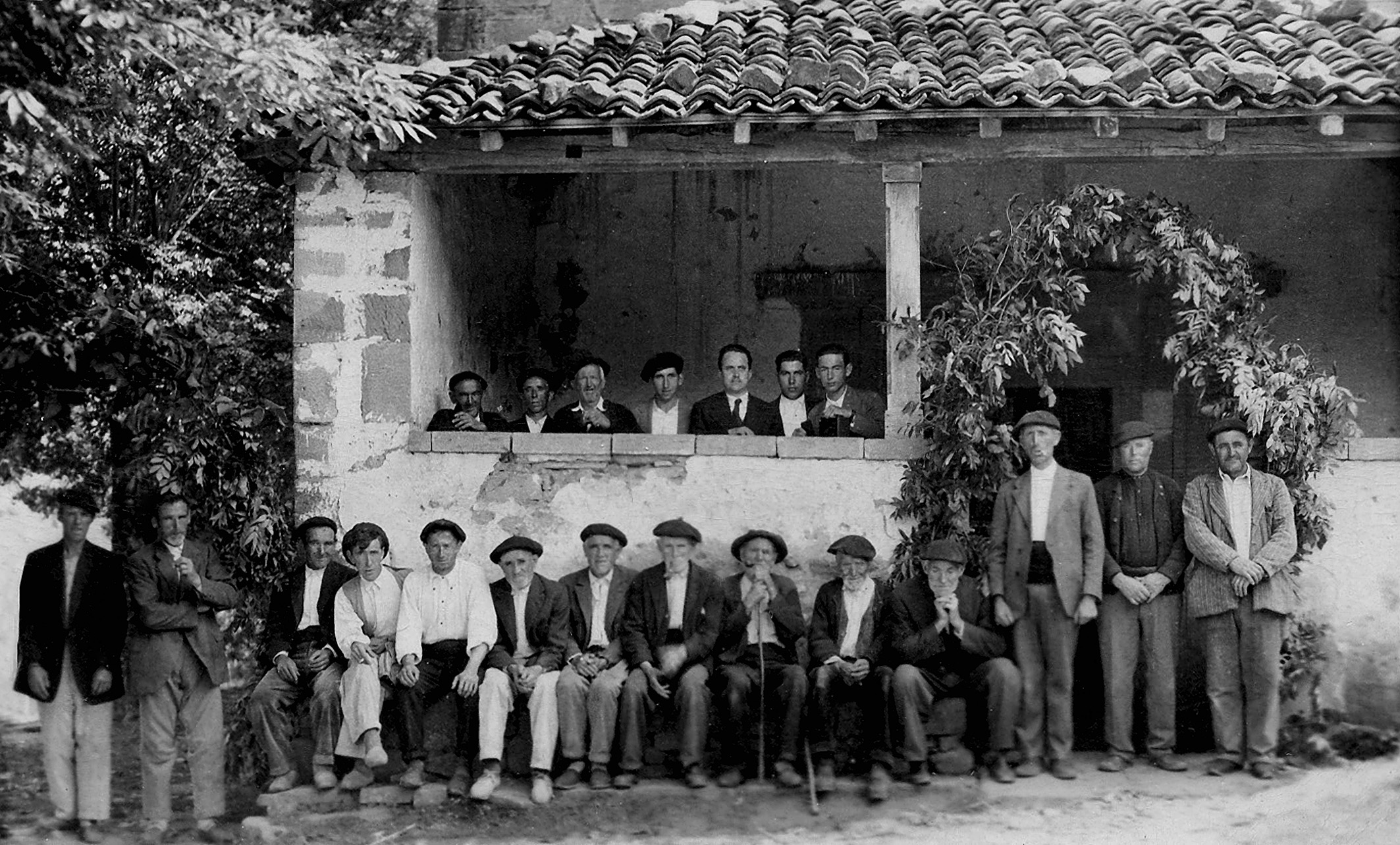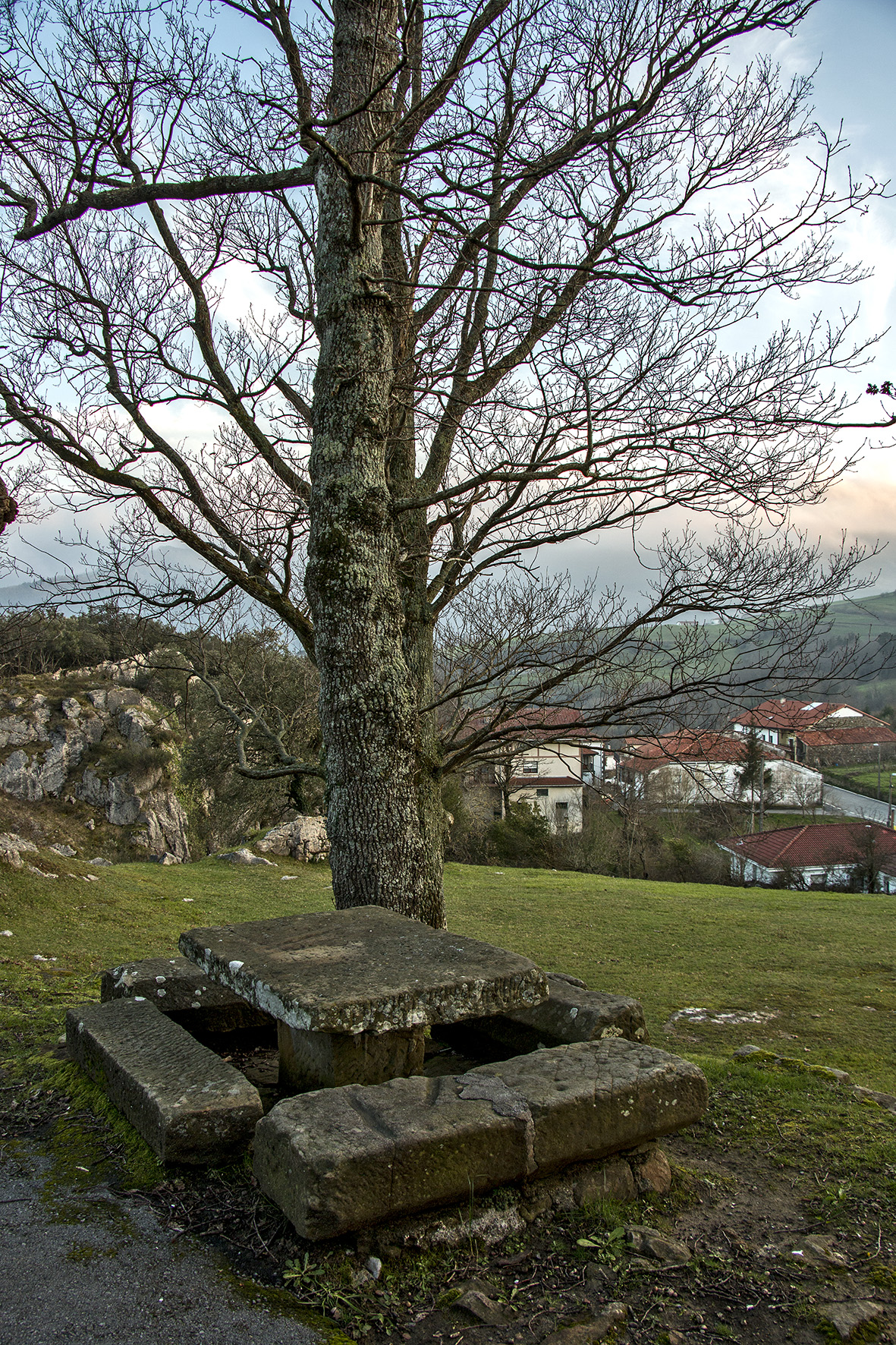Basque ethnography at a glance

Neighbours of Lanzas Agudas, 1934. Courtesy of Miguel Sabino Díaz.
The population of the Valley of Carranza consolidated in the Middle Ages with the formation of primitive councils, so-called concejos, and the government of the republic of Carranza was decided through council meetings. Until 1740, year in which the Valley Assembly House was built in the neighbourhood of Concha, weather permitting, general assemblies were held under a holm oak planted before St Mary’s Church in Soscaño, where the account books were kept.
The local lawyer and writer Nicolás Vicario de la Peña gathers this ancient tradition in the passage translated below from his book El Noble y Leal Valle de Carranza [The Noble and Loyal Valley of Carranza]:
“In former times the said assemblies of nobles and squires might, when the weather was good, not be held in the atrium or forecourt of the temple of St Mary’s Church in Soscaño but in the field or yard next to it, in the shade of a stout holm oak, which, though ancient and hollow, was preserved until the last third of the 19th century and to which natives to Soscaño attributed seven hundred years of life, as they estimated it dated back to the time the church had been erected. The elders who knew it said the holm oak could hold twelve men sitting inside it, which gives an idea of the large diameter of the trunk, its great development and antiquity.”
Likewise, the custom of holding council meetings under a tree to deal with community issues has been continuously practised in some of the councils in the Valley and is still alive in Matienzo.

Council table in Aldeacueva, 2015. Miguel Sabino Díaz.
In earlier times council meetings were convened with a peal of bells and held after high mass on Sundays or public holidays, a member of each household being required to assist.
Neighbours from the council of Aldeacueva held their council meetings around a table and stone benches —rebuilt in 1954 over the remains of the ancient seats— situated under a grove of oak trees close to St Bartholomew’s Church. At the table seated the representative of all the neighbourhoods (pedáneo) in the council, and two commissaries (celadores), one from Aldeacueva and one from Salviejo, responsible for enforcing gates be shut, so livestock could not enter the enclosures of arable land. Neighbours attending the meeting stood around them. Towards the beginning of the 1970s, the figure of the commissary having disappeared, the custom changed, and some neighbours would sit on the benches while others stood. More recently council meetings take place in the neighbourhood bar.
The ash tree planted by Santiago the Apostle’s Church in the council of Lanzas Agudas also used to shelter the members of the assembly. Several ashlar stones around its trunk served as seats. As from the 1960s, after the dry ash was cut, council meetings would be held in the local bar.
In the council of Matienzo, segregated from the council of Soscaño at the end of the 19th century, neighbours still observe the custom of convening council meetings under the holm oaks next to the Parish Church of the Martyrs St Cosmas and St Damian. In recent years summons to meetings are the duty of the neighbourhood representative, who either visits or delivers a note house to house.
Miguel Sabino Díaz – Etniker Bizkaia – Etniker Euskalerria Groups
Translated by Jaione Bilbao – Ethnography Department – Labayru Fundazioa
Reference for further information: Ignacio Abella. Árboles de junta y concejo. Las raíces de la comunidad [Meeting and council trees. The roots of the community]. Bilbao, 2015.

